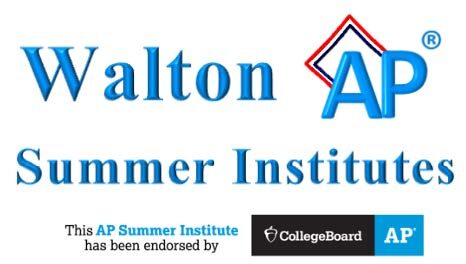
Jenna Nikles has been teaching AP Chemistry for 12 years at a public, Title-I high school in Central Florida. Her bachelor’s degree is in molecular biology with a minor in chemistry, and her master’s degree is in science education – both degrees from the University of Central Florida.
She is currently working on her Master of Science in Chemistry from Ohio University online, with a summer 2024 expected graduation date.
Jenna has been an AP Chemistry Exam reader since 2019, she is a gifted endorsed instructor, and she is clinical educator certified to mentor new teachers and students in teacher-preparation programs. She has more than four years of experience leading teacher professional development, facilitating multi-day workshops with chemistry teachers in her district during summer PD time. She has experience with virtual instruction for both students and teachers, using a variety of technology to actively engage participants in the online format.
She aims to review AP chemistry course content while modeling effective instructional practices teachers can use in their classrooms. The lab activities she shares are easily modified to fit different budgets and available course time; lab activities help engage students in the content, boost performance on the exam using science practice skills, and encourage diverse learners to take the AP Chemistry course.
General Agenda
In this four-day, online APSI we will explore and practice the skills and content that students will need to be successful in
AP Chemistry. We will cover all units of the Course and Exam Description, and practice key strategies to improve student
success. Emphasis will be placed on atomic structure, bonding, intermolecular forces, thermodynamics,
electrochemistry, and equilibrium, with the level of detail on each topic dictated by participant needs. We will explore
inquiry-based labs, with budget-friendly options and modifications for all school environments, including hands-on time
exploring virtual simulations and animations. Lab demonstrations will be shown live on camera, with the opportunity to
ask questions and interact with real, student-collected sample data. Teachers will be given fully editable lab handouts to
cover all skills needed for the AP Chemistry exam, including a detailed materials and supplies list. We will also spend
significant time on exam preparation strategies and how to scaffold student success with written response questions.
Teachers will have time to plan their course calendar and explore AP classroom resources, including practice making
assessments using the question bank. We will discuss supporting the needs of all learners, recruiting students, and
participating in the AP teacher community.
This sample agenda and lab activities may be updated or changed based on participant input on areas of highest need.
Day 1
Welcome, icebreaker, and introduce the AP chemistry program.
Introduce the chemistry Course and Exam Description, AP Classroom, and AP Daily.
Discussion of course structure and building laboratory activities into the content curriculum.
Strategies for teaching key concepts in Units 1 and 2.
Demonstrate one lab and discuss how to implement it.
Hands-on practice with multiple simulations.
Labs:
Empirical formula of a hydrate (modification: popcorn)
Photoelectron Spectroscopy Simulation
VSEPR lab simulation
Day 2
Discussion of exam format and requirements and testing strategies.
Practice scoring free response questions and how to scaffold response skills with students.
Strategies for teaching key concepts in Units 3, 4, and 5.
Demonstrate two or three labs and discuss how to implement them.
Hands-on practice with multiple simulations.
Labs:
Intermolecular forces of volatile liquids
Alka seltzer kinetics (or Marble statue kinetics)
Relating light and concentration (with and without a
spectrophotometer, simulation option)
Molarity simulation
Nuclear Decay kinetics simulation
Day 3
Discussion of additional free response and multiple-choice practice strategies.
Using the released AP Chemistry exam materials, sample responses, and chief reader report.
Discussion on recruiting a wide range of learners to participate in the course and how to create a supportive
learning environment for all students.
Strategies for teaching key concepts in Units 7 and 8.
Demonstrate one or two labs and discuss how to implement them.
Hands-on practice with multiple simulations.
Labs:
Colors of the rainbow Le Chatelier’s principle
Acid/Base titration (with and without a pH probe, Ksp
titration option)
Reversible reactions simulation (with hands-on options
for classroom use)
Acid/Base titration simulation
Day 4
Discussion on reviewing for the AP exam, including AP Daily.
Review the AP course audit and practice using the instructional planning report.
Discussion on how to use student data from AP Classroom and practice using the question bank.
Modeling whole-course planning using the Course and Exam Description and time to create a full-year (or
semester) calendar.
Strategies for teaching key concepts in Units 6 and 9.
Demonstrate one or two labs and discuss how to implement it.
Hands-on practice with multiple simulations.
Discuss the AP teacher community and becoming an exam reader. Question and answer time and time to
complete workshop survey.
Labs:
Hand warmer design lab
Redox titration of hydrogen peroxide
Endothermic and Exothermic processes simulation
Voltaic cell creation and simulation
